What is Hamas and why is it fighting with Israel in Gaza?
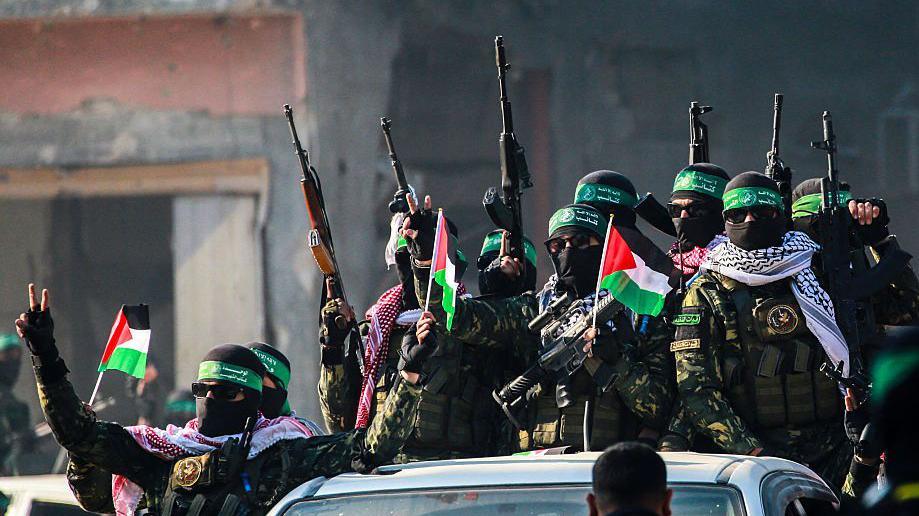
Hamas has run the Gaza Strip since 2007
- Published
Hamas is an armed Palestinian group and political movement in the Gaza Strip.
On 7 October 2023 it attacked Israel, killing about 1,200 people and taking 251 hostages. This triggered a massive Israeli military offensive in Gaza, which has killed tens of thousands of Palestinians.
Hamas, which the US, UK, Israel and many other nations have designated as a terrorist organisation, has been severely weakened during the conflict.
In October 2025, the first phase of a ceasefire deal brokered by US President Donald Trump saw the remaining 20 living Israeli hostages released and nearly 2,000 Palestinian prisoners and detainees freed from Israeli jails.
What is Hamas and what are its goals?
Hamas started as an offshoot of the Muslim Brotherhood in 1987. Its name means Islamic Resistance Movement.
It is opposed to the existence of Israel on what it says is Palestinian land. It wants a state based on Islam in its place and across the occupied West Bank, East Jerusalem and Gaza.
It has, however, signalled its willingness to accept an interim Palestinian state in just the West Bank, East Jerusalem and Gaza, without renouncing its claim to all of historic Palestine.
Before the 7 October attacks, Hamas was estimated to have about 30,000 fighters, but Israel said in August 2024 that its forces had killed more than 17,000 of them. This could not be independently verified.
Hamas became the sole ruler in the Gaza Strip in 2007, after winning Palestinian elections and violently ousting rivals.
However, as a result of the war, the group's infrastructure and ability to operate openly have been all but destroyed.
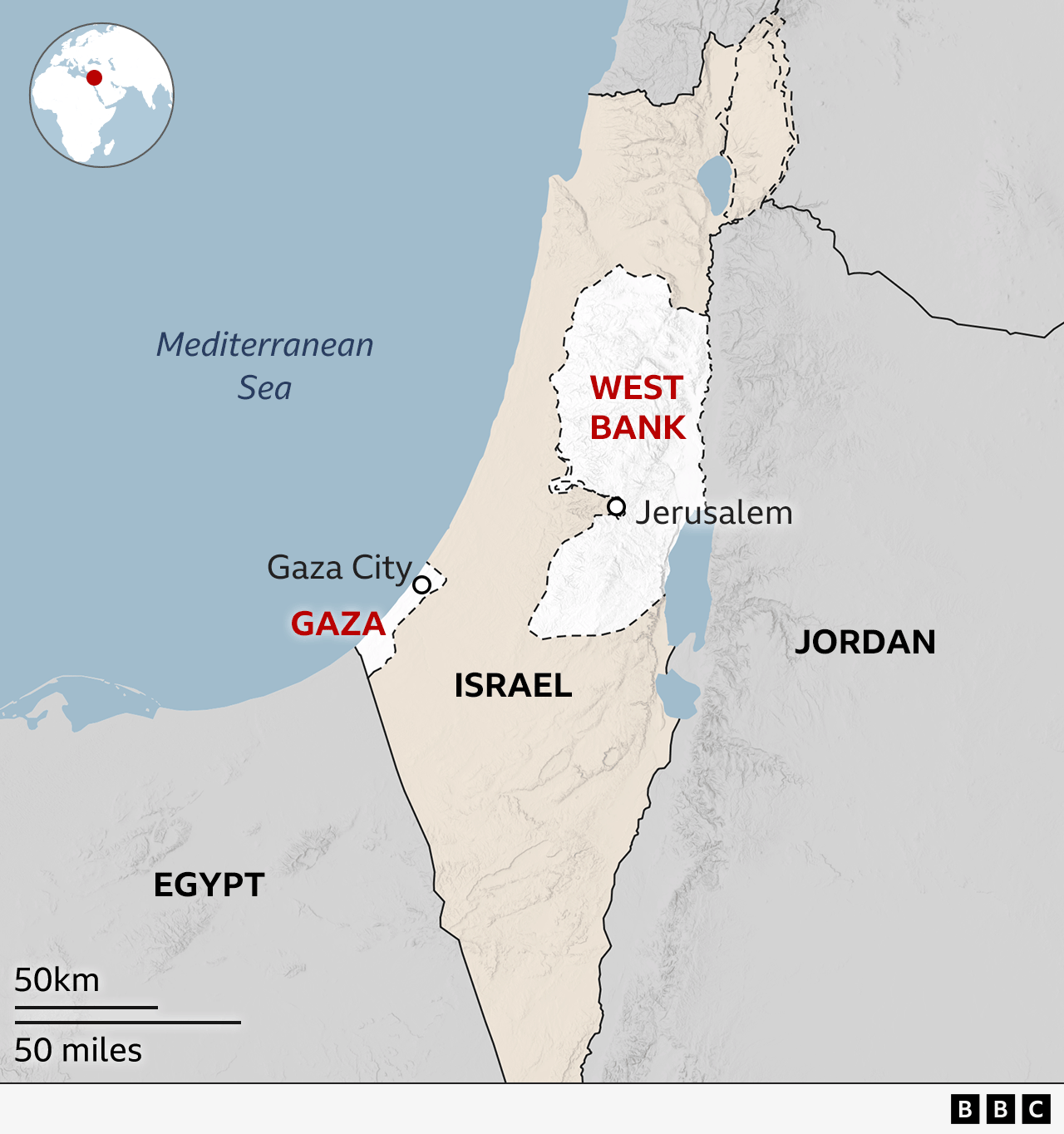
Who are Hamas's leaders?
When Hamas attacked Israel on 7 October 2023, the group's main leader was Ismail Haniyeh. He was based in Qatar, where the group has its political headquarters.
Haniyeh was assassinated while visiting the Iranian capital, Tehran, in July 2024, in an attack which Israel said it carried out.
He was replaced by Yahya Sinwar, who had been leader of Hamas in Gaza since 2017.
Sinwar was killed by Israel Defense Forces (IDF) soldiers in Gaza in October 2024.
He was the architect of the 7 October attacks and was Israel's most wanted man.
Several other top commanders of Hamas have been killed by Israel since the war began.
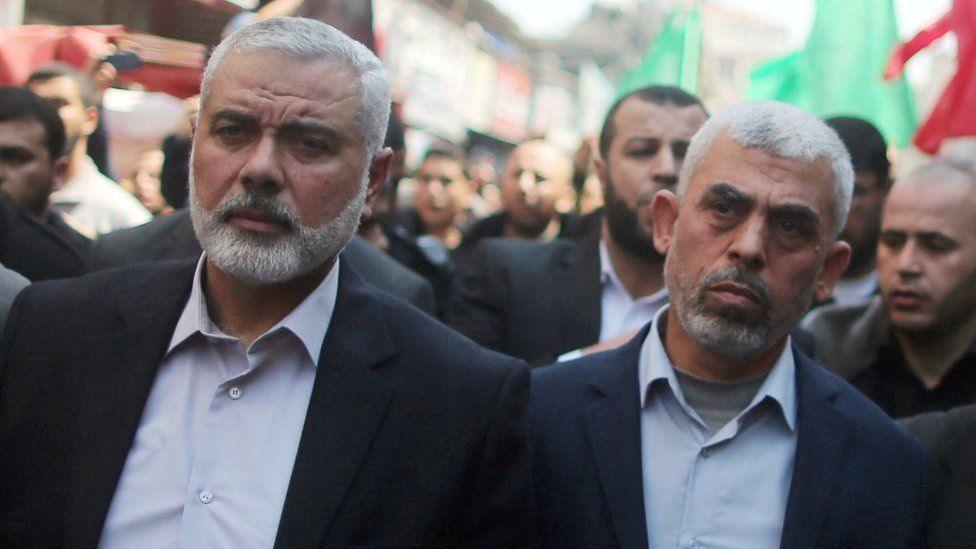
Hamas leader Ismail Haniyeh (left) and his replacement Yahya Sinwar (right) were killed within months of each other
Since Sinwar's death, Hamas has been led by a five-man council. At its head is believed to be Khalil al-Hayya, Sinwar's former deputy. Al-Hayya has been based in Qatar since before the October 2023 attack and has led Hamas delegations in indirect ceasefire talks with Israel.
The council also includes Khaled Meshaal, the head of Hamas's relations with Palestinian communities abroad; Zaher Jabarin, the exiled West Bank leader; Muhammad Darwish, head of the Shura Council, Hamas's top decision-making body; and a fifth individual whose identity is unknown. All are based in Qatar or Turkey.
In September 2025, Israel carried out strikes targeting Hamas leaders including Al-Hayya in Qatar, in a move which received international condemnation. Five Hamas members and a Qatari security official were killed, but Hamas said its leaders survived.
Hamas's most important ally is Iran - its biggest backer in terms of funds, weapons and political support.
Why did Hamas attack Israel?
Hamas led the deadliest attack on Israel in its history, killing about 1,200 people, including more than 360 young people at a music festival.
The unprecedented attack sent shockwaves across the country, as Hamas gunmen targeted border communities for hours and took hostages.
Hamas has described the attack as a response to what it says are decades of Israeli oppression, the killings of Palestinians and years-long blockade of the Gaza Strip.
As Israel prepared to mark a year since the attack, al-Hayya justified it by saying it had put the plight of the Palestinians on the world's political agenda.
"It was necessary to raise an alarm in the world to tell them that here there is a people who have a cause and have demands that must be met," he told the BBC's Jeremy Bowen.
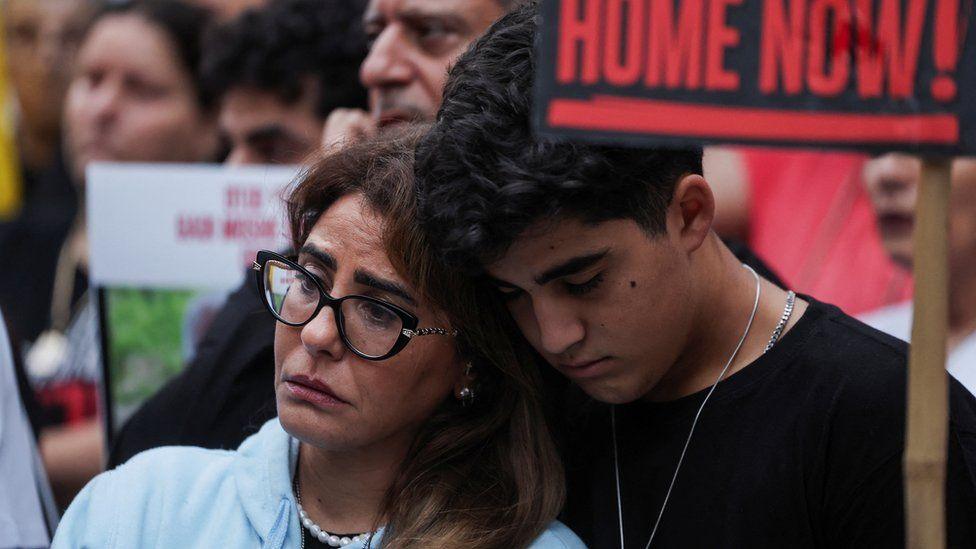
Events remembering those killed and taken hostage were held as Israel marked the first anniversary of the attacks
Hamas has also said the attack was a reaction to what it claims are Israeli efforts to take over the al-Aqsa mosque compound in Jerusalem - Islam's third holiest site. Hamas also wants the release of thousands of Palestinians in Israeli prisons.
The year leading up to the attack was also the deadliest in the occupation of the West Bank, since the UN began recording data in 2005. By the end of the year at least 505 Palestinians had been killed there, mostly by Israeli soldiers and settlers. In the same year, 30 Israelis were also killed in the West Bank.
All Palestinian factions and parties oppose Israel's presence in the West Bank, as well as occupied East Jerusalem and the Gaza Strip. They want the land to be part of a future independent state, something backed by the vast majority of the international community.
Israel's occupation of the land and settlements it has built there is illegal under international law. However, Israel's current government does not recognise the right of the Palestinians to have their own state, arguing that it would be a security threat. It also claims a historical right to the West Bank.
Analysts have suggested the attack could also have been timed to derail recognition of Israel by Saudi Arabia, which was considered likely at the time.
What was Israel's response to Hamas's attacks?
Israel launched a massive military offensive against Hamas in Gaza following the 7 October attack. It began with air strikes and was followed by a ground invasion.
Israeli Prime Minister Benjamin Netanyahu said Israel's aims included destroying Hamas, returning the hostages and making sure Israel cannot be threatened in future.
More than 67,000 people in Gaza - mostly civilians, about half of whom were women and children - have been killed in the fighting, according to the Hamas-run health ministry.
Some 460 Israeli soldiers have been killed during the war, the Israeli military says.
The UN says most of the 2.3 million population of Gaza have been forced from their homes and that Gaza's buildings and infrastructure have suffered catastrophic damage.
Hundreds of thousands of Palestinians were forced to flee when Israel began a major offensive to fully occupy Gaza City which, it says, remains Hamas's "main stronghold". The offensive marked a major escalation in Israel's two-year military campaign.
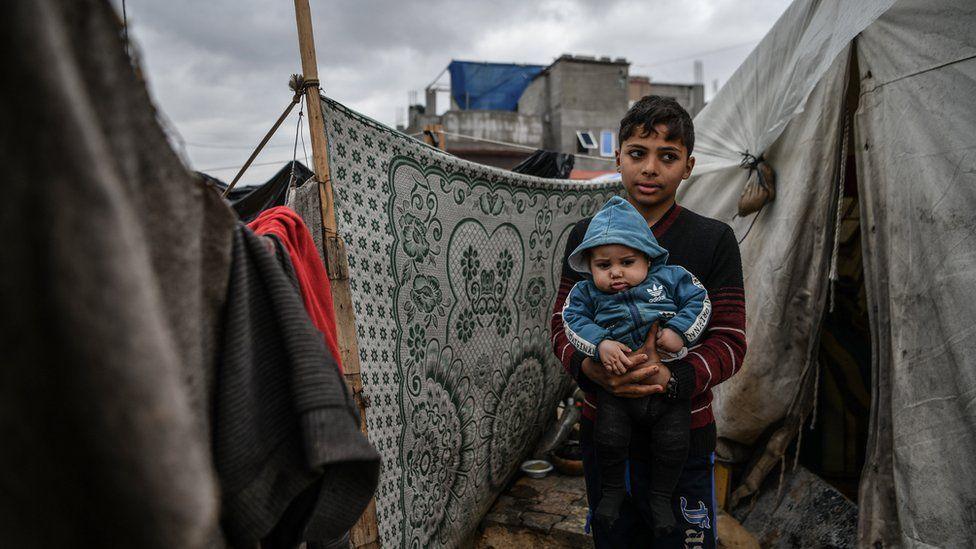
A United Nations (UN) commission of inquiry said that Israel has committed genocide in Gaza. The UN's top court – the International Court of Justice - is currently examining a claim of genocide in a case brought by South Africa. Israel says the case is "wholly unfounded".
UN-backed experts also say there is famine in Gaza City and surrounding areas, conditions which it says are "entirely man-made". Israel called the experts' declaration an "outright lie".
Both Israel and Hamas have been accused of committing war crimes and human rights abuses. The UN Human Rights Council says both sides have mounted attacks against civilian populations and are responsible for "murder or wilful killings". Both have rejected the report's findings.
In September 2025, the UK formally recognised a Palestinian state, citing the "appalling situation" in Gaza, external and Israel's illegal settlement expansion in the West Bank. Several other countries, including France, Canada and Australia also extended recognition. Israel condemned the moves, saying they rewarded Hamas for the 7 October attack.
In October 2025, the Israeli government and Hamas agreed to the first phase of US President Donald Trump's 20-point peace plan, leading to a ceasefire in Gaza.
Israel pulled its troops back to an agreed position, and allowed more aid to enter the Strip. Hamas returned the remaining 20 living Israeli hostages, while Israel freed almost 2,000 Palestinian prisoners and detainees.
Negotiations continue over the details of the later phases of the peace deal.
Have Israel and Hamas fought before?
Since its founding, Hamas has carried out bombings, rocket attacks and shootings, killing civilians and soldiers in Israel.
Israel has carried out operations against Hamas in Gaza and its cells in East Jerusalem and the West Bank, killing its fighters. In such operations, Israel has killed many Palestinian civilians.
The two sides have also fought several major conflicts - in 2008-09, 2012 and 2014.
The last major conflict between the two sides was in May 2021, which ended in a ceasefire after 11 days.
Every round of fighting has seen people killed on both sides, the vast majority of them Palestinians in Gaza.
Where is the Gaza Strip and how big is it?
The Gaza Strip is a 41km (25-mile) long and 10km-wide territory between Israel, Egypt and the Mediterranean Sea.
It was part of a proposed Arab state under the original UN partition plan in 1947. Gaza was then occupied by Egypt in the war that followed Israel's creation, then captured by Israel during the 1967 Six-Day War.
Israel withdrew its troops and about 7,000 settlers from the territory in 2005, though the UN still considers the land to be occupied.
Gaza is one of the world's most densely populated places.
Just over three-quarters of its population are registered refugees, or descendants of refugees, the UN says.
Even before the latest war between Israel and Hamas, the territory had one of the highest unemployment rates in the world, with most of its population living below the poverty line and depending on food aid to survive.
Israel controls Gaza's airspace, its shoreline and the shared border, as well as the movement of people and goods.